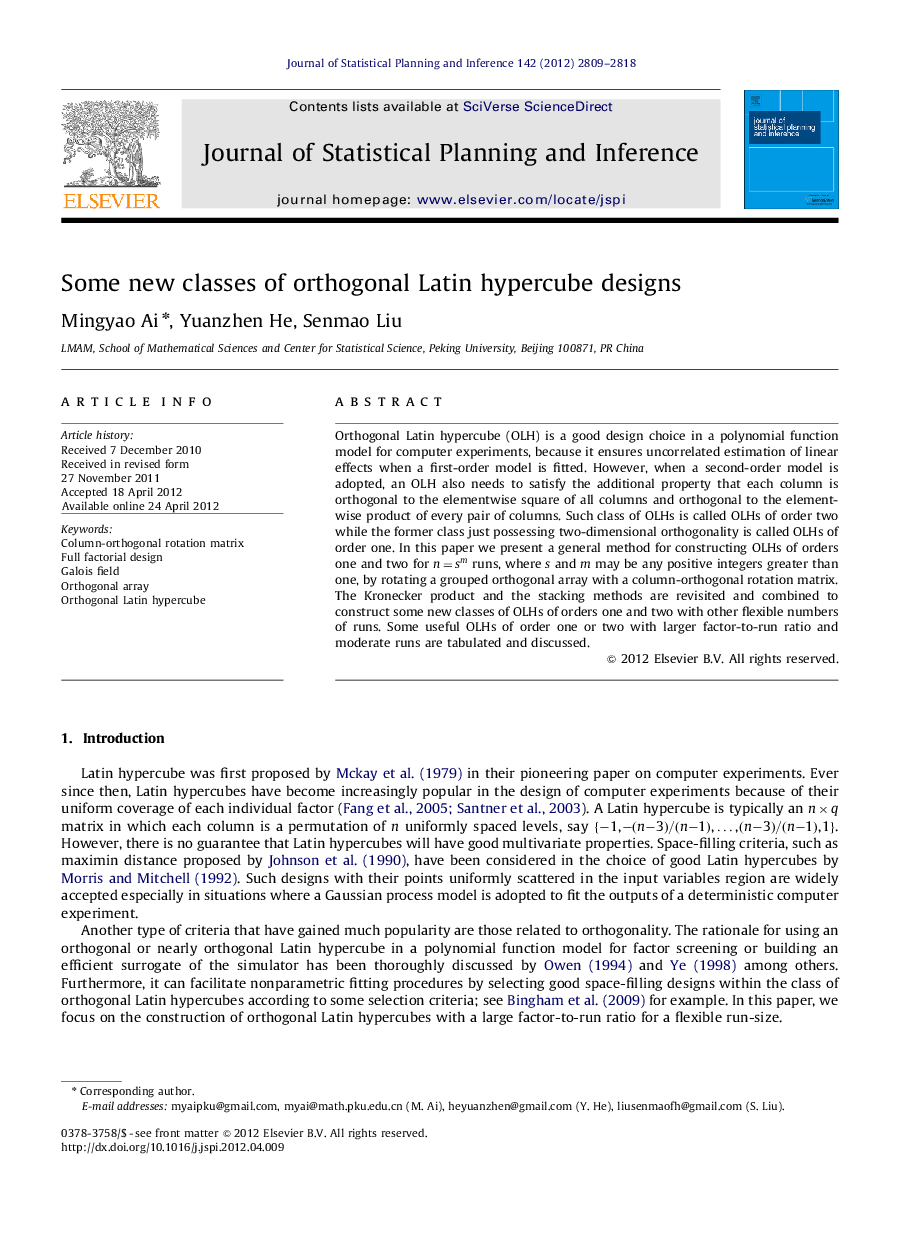| Article ID | Journal | Published Year | Pages | File Type |
|---|---|---|---|---|
| 1149494 | Journal of Statistical Planning and Inference | 2012 | 10 Pages |
Orthogonal Latin hypercube (OLH) is a good design choice in a polynomial function model for computer experiments, because it ensures uncorrelated estimation of linear effects when a first-order model is fitted. However, when a second-order model is adopted, an OLH also needs to satisfy the additional property that each column is orthogonal to the elementwise square of all columns and orthogonal to the elementwise product of every pair of columns. Such class of OLHs is called OLHs of order two while the former class just possessing two-dimensional orthogonality is called OLHs of order one. In this paper we present a general method for constructing OLHs of orders one and two for n=smn=sm runs, where s and m may be any positive integers greater than one, by rotating a grouped orthogonal array with a column-orthogonal rotation matrix. The Kronecker product and the stacking methods are revisited and combined to construct some new classes of OLHs of orders one and two with other flexible numbers of runs. Some useful OLHs of order one or two with larger factor-to-run ratio and moderate runs are tabulated and discussed.
